I’ve always found it fascinating to watch these little falcons eat. A gruesome experience to be sure but so much more interesting than observing a raptor such as an owl who simply swallows its prey whole. And if you watch carefully there’s a whole lot more going on during the process than first meets the eye.
Kestrels can be pretty picky eaters. I’ve documented in another post on this blog that they often refuse to eat the intestinal tract of their prey and deliberately discard it. Kestrels, like other raptors, eject pellets of indigestible materials like fur, feathers, chitin and bone. All food that is swallowed first goes to the crop. From there the usable food continues on to the stomach but the indigestibles stay in the crop, are formed into a pellet and regurgitated roughly 23 hours (in the case of kestrels) after the meal was consumed.

Canon 7D, 1/800, f/7.1, ISO 640, 500mm f/4, 1.4 tc
The kestrels I’ve watched eating voles and mice typically eat the brain, decapitate the rodent, then go for the soft internal protein rich muscles and other organs (discarding the intestines). Since kestrels tear their prey into bite-sized pieces they can pick and choose what they actually swallow.
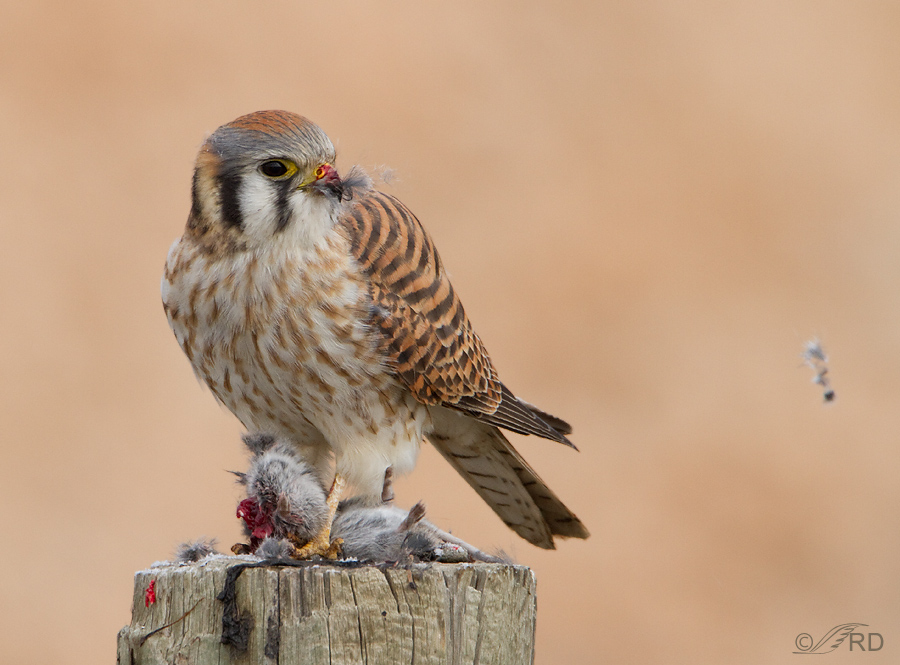
Canon 7D, 1/400, f/8, ISO 640, 500mm f/4, 1.4 tc
Pellet expulsion can be difficult and traumatic as I’ve documented elsewhere on this blog with Northern Harriers and I suspect that’s one of the reasons that kestrels try to avoid swallowing as much fur as possible. When opening up the body cavity they often get a beak-full of fur and they try to “spit out” as much of it as possible which can be difficult because it sticks to their wet beak, mouth and tongue. Here you can see some of it flying off with the breeze.
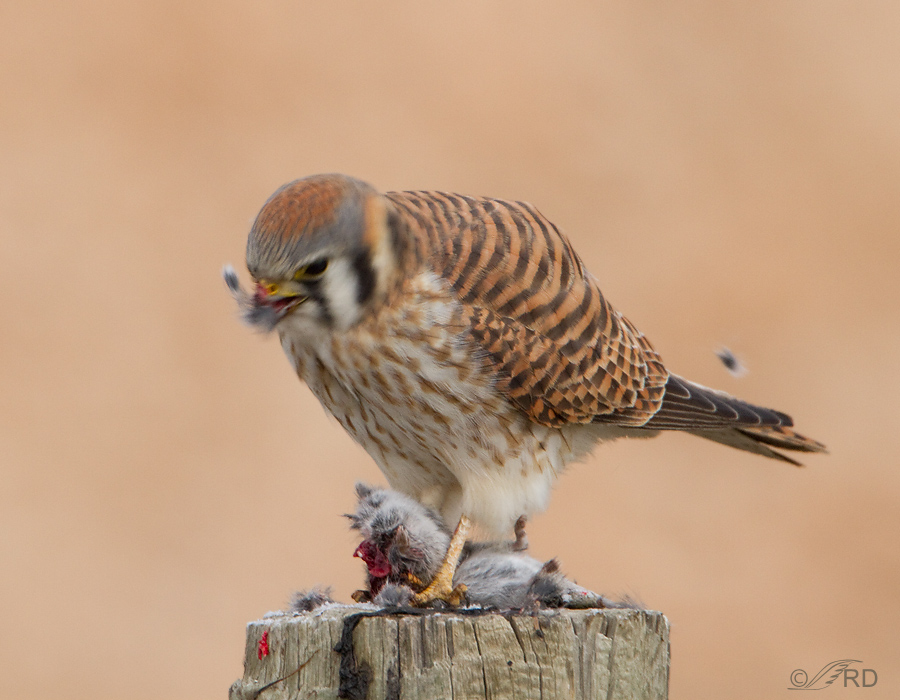
Canon 7D, 1/500, f/8, ISO 500, 500mm f/4, 1.4 tc
To get rid of the sticky fur they often have to shake their head vigorously. I thought the motion blur of the head in this photo was effective in showing that behavior, especially with the clump of hair flying off to the right.

Canon 40D, 1/2000, f/8, ISO 400, 500mm f/4, 1.4 tc
They do the same thing with feathers when their prey is a song bird. This is one of the few times I witnessed a kestrel with a bird kill – usually it’s a vole, occasionally a mouse.
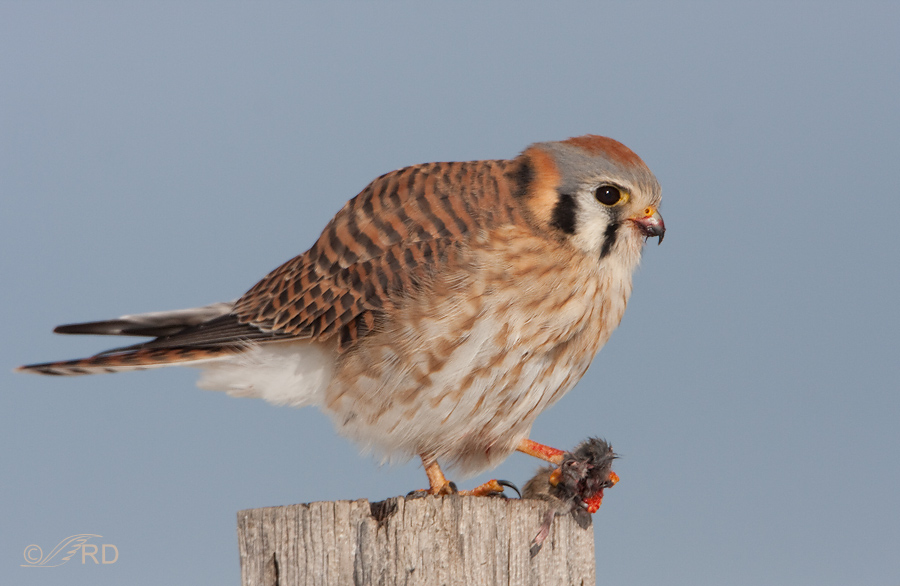
Canon 40D, 1/2500, f/9, ISO 500, 500mm f/4, 1.4 tc
Toward the end of the meal the body cavities have been emptied and most of the muscles consumed. There’s not much left but an empty bag of skin and fur with legs and tail attached.

Canon 40D, 1/2000, f/9, ISO 500, 500mm f/4, 1.4 tc
At this point the kestrel will sometimes discard the rest of the carcass and fly away. Other times, especially during winter when it’s very cold and food is at a premium they will swallow what’s left in one gulp. This bird flew away with what was left of the mouse (I believe it to be a mouse and not a vole because of the long tail).
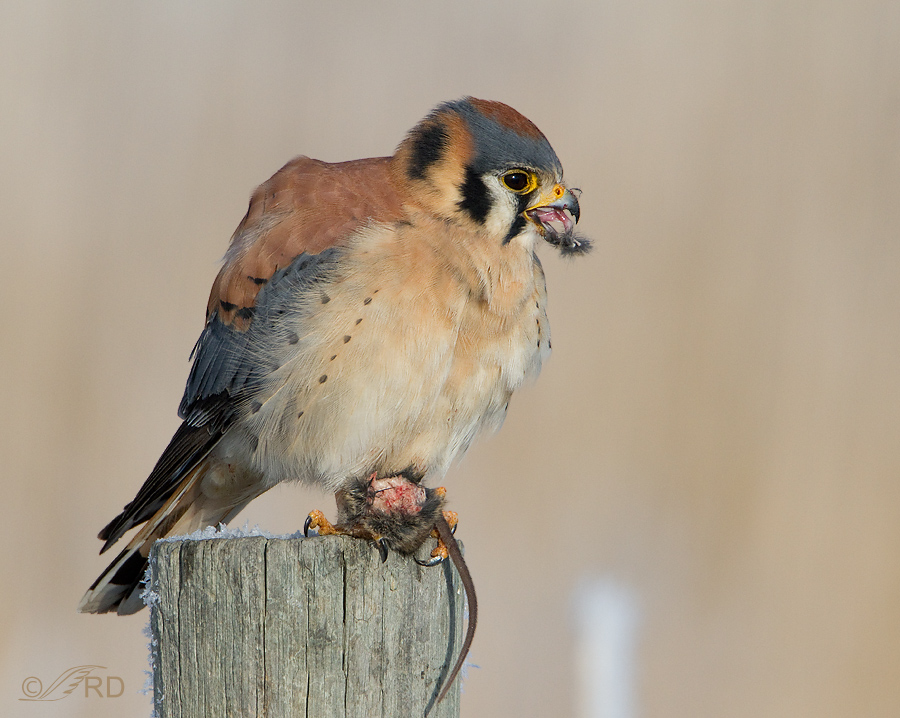 Canon 7D, 1/1250, f/10, ISO 400, 500mm f/4, 1.4 tc (I chose f/10 for more DOF because this bird let me get very close)
Canon 7D, 1/1250, f/10, ISO 400, 500mm f/4, 1.4 tc (I chose f/10 for more DOF because this bird let me get very close)
This male kestrel pulled off strips of fur-covered hide from the back of the mouse. Some of them he swallowed and some he didn’t – probably dependent on the amount of flesh each piece had. But then he did something that surprised me.
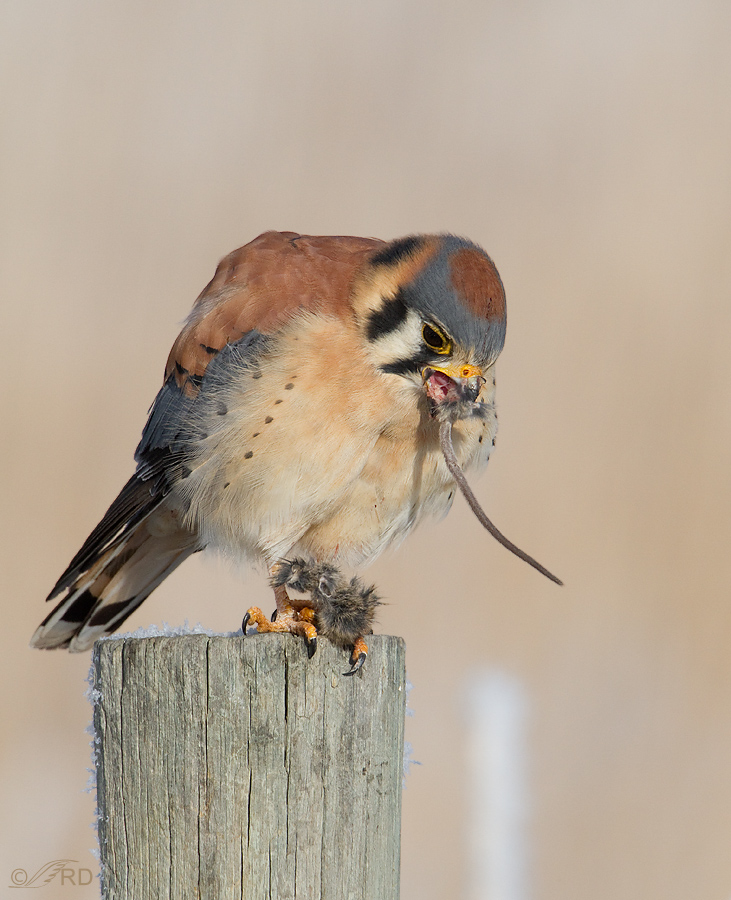
Canon 7D, 1/1000, f/10, ISO 400, 500mm f/4, 1.4 tc
I had never before seen a kestrel rip off the tail like this. When he did I fully expected him to discard it since it’s mostly bone and fur but that’s not what happened.
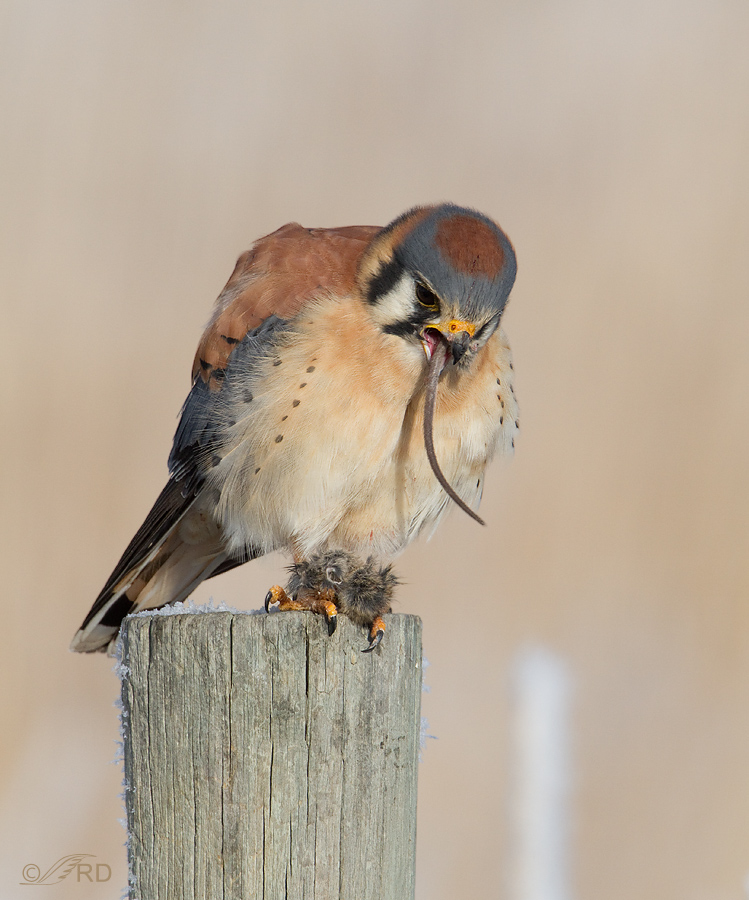
Canon 7D, 1/1000, f/10, ISO 400, 500mm f/4, 1.4 tc
He decided to attempt to swallow the tail.

Canon 7D, 1/1000, f/10, ISO 400, 500mm f/4, 1.4 tc
He really struggled getting it down.
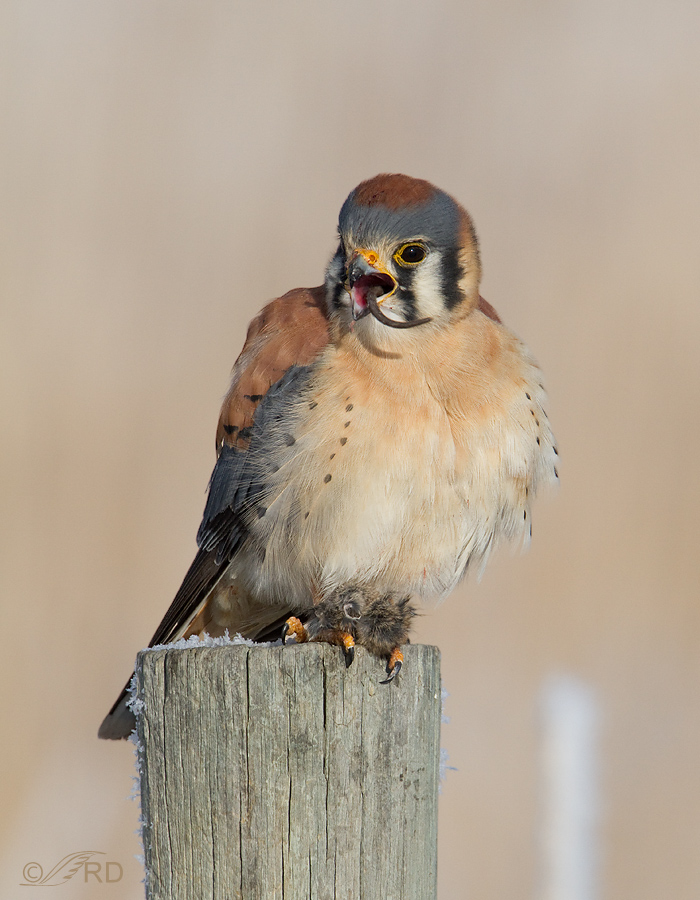
Canon 7D, 1/1000, f/10, ISO 400, 500mm f/4, 1.4 tc
The first time he tried it just wouldn’t go all the way down so he hacked it up and started all over again.
 Canon 7D, 1/1000, f/10, ISO 400, 500mm f/4, 1.4 tc
Canon 7D, 1/1000, f/10, ISO 400, 500mm f/4, 1.4 tc
In fact, this is the second attempt.
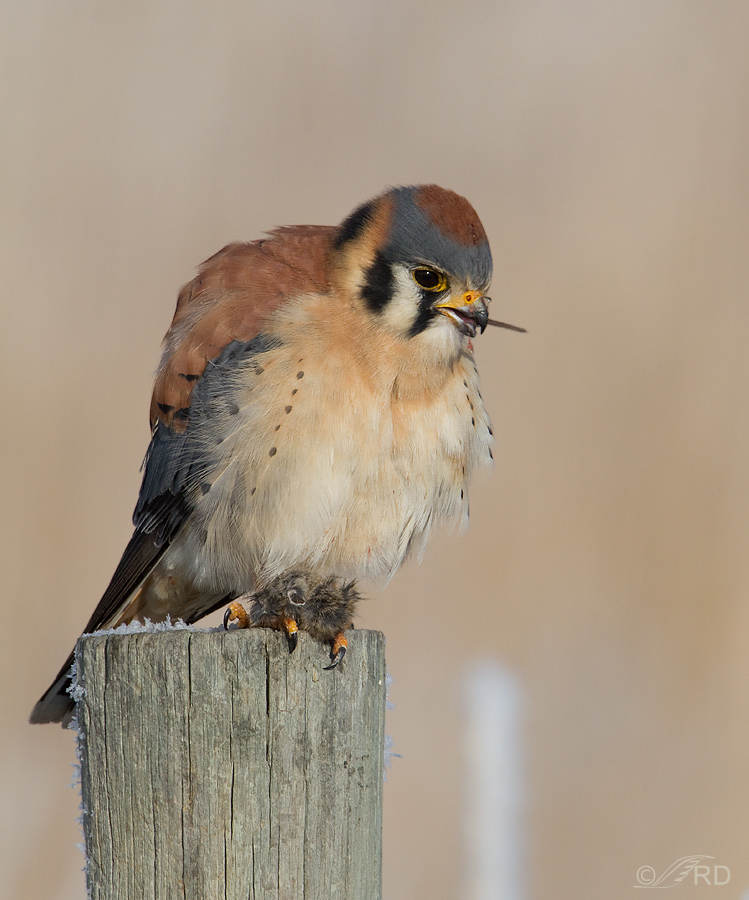
Canon 7D, 1/1000, f/10, ISO 400, 500mm f/4, 1.4 tc
At this point I thought he’d have to bring the tail back up again and abandon his attempt to swallow it.
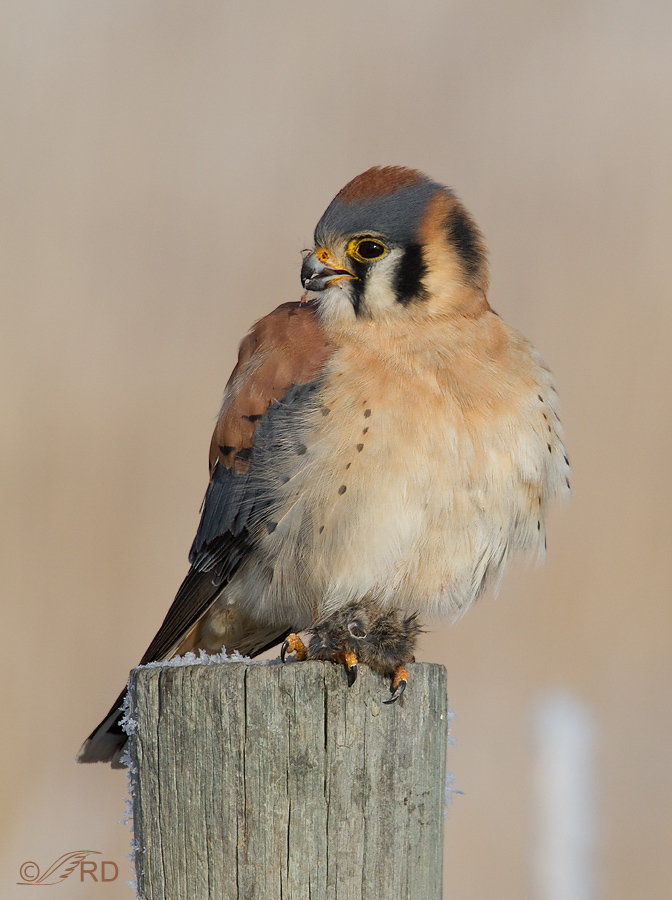
Canon 7D, 1/1000, f/10, ISO 400, 500mm f/4, 1.4 tc
But in the end he succeeded in getting it down. Here the tail has just disappeared down the throat. He actually swallowed a few more bites of the mouse after this, which amazed me. They must have been difficult to swallow since that long tail would have extended from the stomach to the back of the throat but he somehow managed to do it.
I’d like to stress than none of these birds were baited. Both mice and voles are readily available at the refuge where I usually photograph kestrels and these birds came by their prey naturally.
Ron


hey will american kestrels eat ham. I caught a baby that the mom abandoned and am trying to take care of it but i dont know what it eats.
Evan, Adult kestrels eat a variety of things like grasshoppers, mice and small birds but you need to contact an animal rehabilitation organization in your area (or your state Fish and Wildlife who can direct you to a rehabber) and have them take care of the bird in order to give it a chance for survival. Proper care of young birds isn’t easy and besides it’s illegal to have a migratory bird or bird of prey in your possession. Please contact an organization like that very soon.
Exceptional work Ron, this is a fascinating documentary on these great birds. Remarkable how close you’ve been able to approach these fellows and record these observations.
Another excellent documentary, I did not know Kestrel’s would feed this way, very interesting and wonderful photo’s Ron, well done.